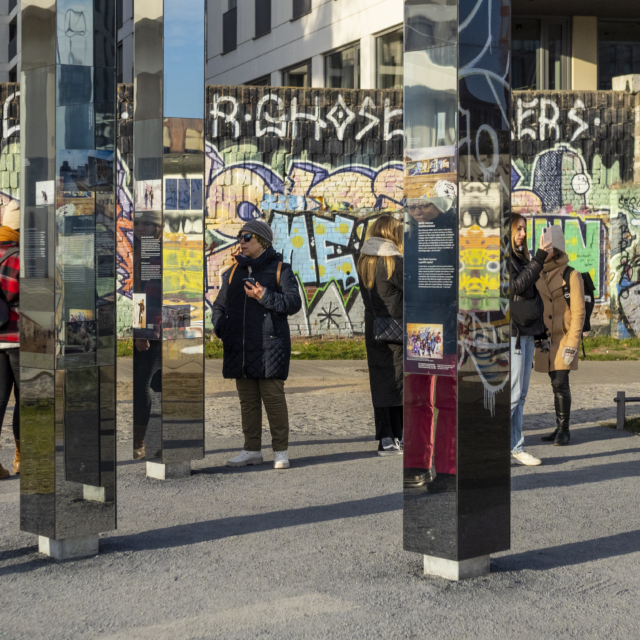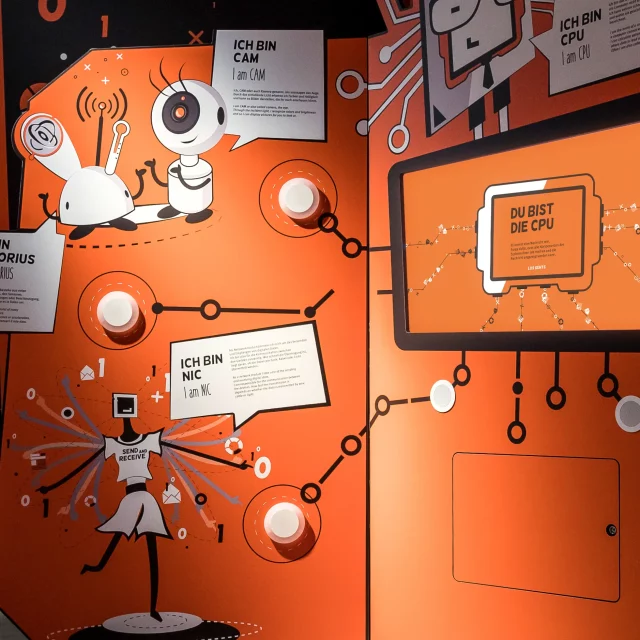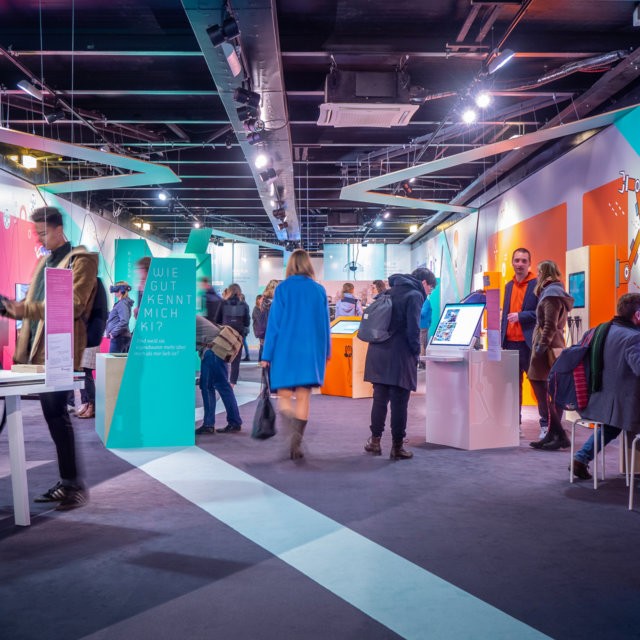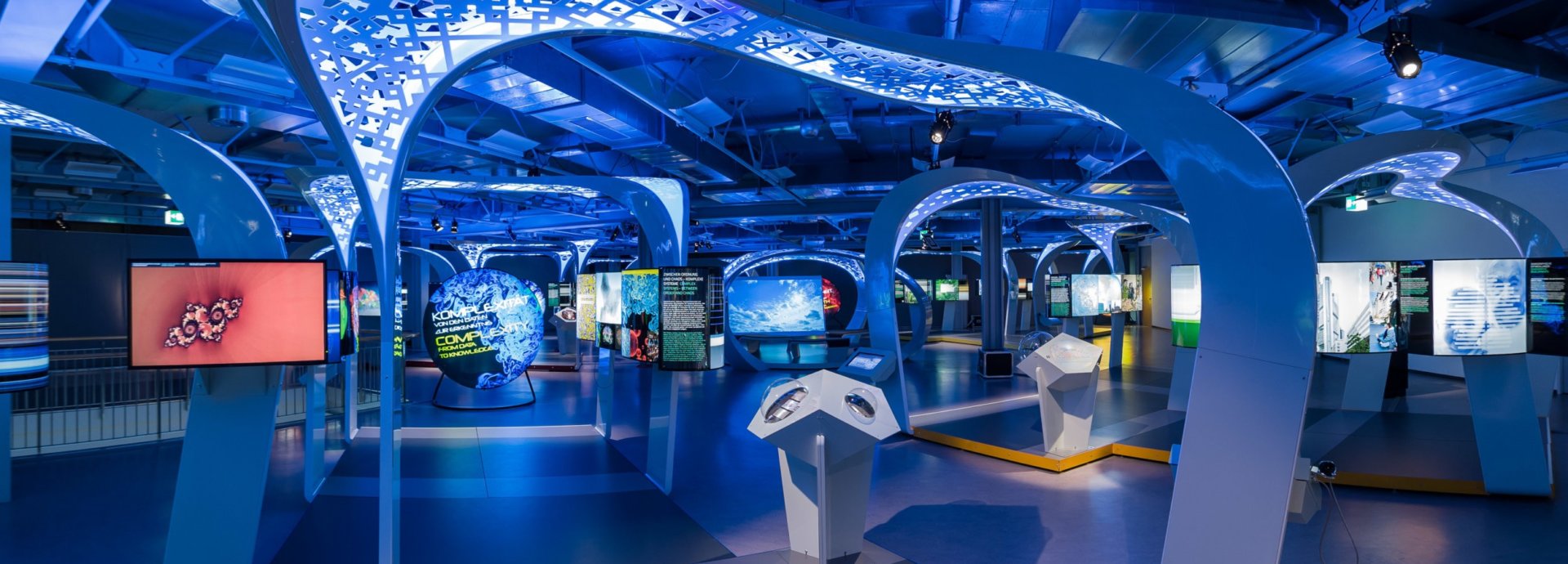

The Max Planck Science Tunnel is one of the worlds most successful sci-com formats. The traveling exhibition entangles the largest challenges of mankind into a sophisticated scenography. In the Max Planck Science Tunnel, visitors can learn about the importance of basic research for our future and the commitment researchers make. Topics include climate change, health for a growing global population and the search for the origins of our universe.
The first Science Tunnel premiered at the Expo 2000. From 2012 till 2018 the third, entirely redesigned exhibition was on the move. Together with its sister project Science Express India the traveling exhibition reached an audience of over 10 million people worldwide.
The exhibition makes complex, current contents of basic research accessible and entertaining. Its architecture relies on flexible floor plans and modular information units. The technology was also developed with the specific strains of a travelling exhibition in mind. Research institutions and science centres from all over the world apply to host the Max Planck Society’s popular travelling exhibition. In addition to concept and design, Archimedes also signs responsible for the exhibition’s worldwide logistics, its assembly, transport, and customs formalities.
Client: Max Planck Society Exhibition Space: 1000 -1200 m² Opening: 2000 Duration: 2000 – 2018 Visitors: 3,5 million Languages: 9 languages
More Information: https://www.sciencetunnel.de
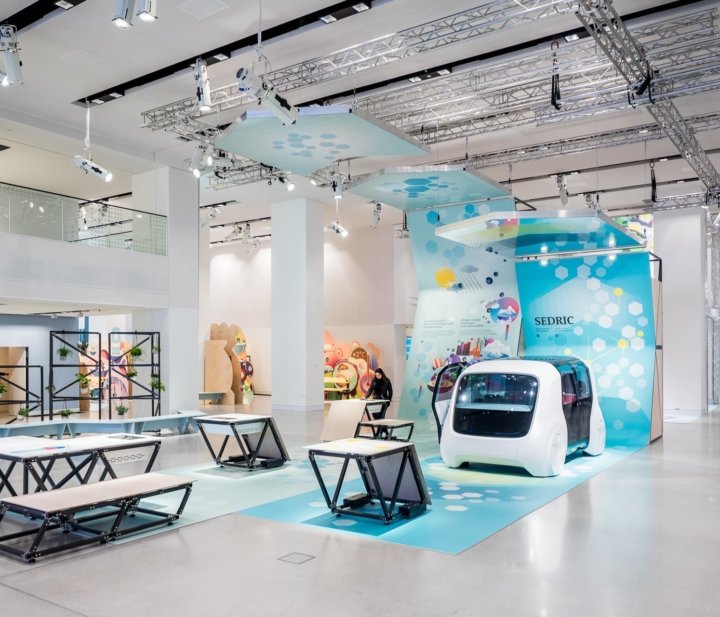
Jeder Besucher erhält am Eingang einen digitalen Ausstellungsführer. Die Navigation ist sehr einfach und ermöglicht den Besuchern den Zugang zu zwei Basisfunktionen: Zum Einen können sie, egal wo sie sich in der Ausstellung befinden, systematisch auf alle Themenbereiche zugreifen. Zum Anderen können die Besucher Marker scannen, die sie zu Wissenschaftler- Interviews und virtuellen Exponaten führen.
Im “Brief an die Zukunft” haben Besucher die Möglichkeit direktes Feedback zu den Themen der Ausstellung zu geben. Per Electronic Guide schicken sie ihre Zukunfts-Fragen, Wünsche oder Zweifel an das Ausstellungsteam. So entstehen für Publikum und Wissenschaft an jedem neuen Ausstellungsort neue Einsichten.
